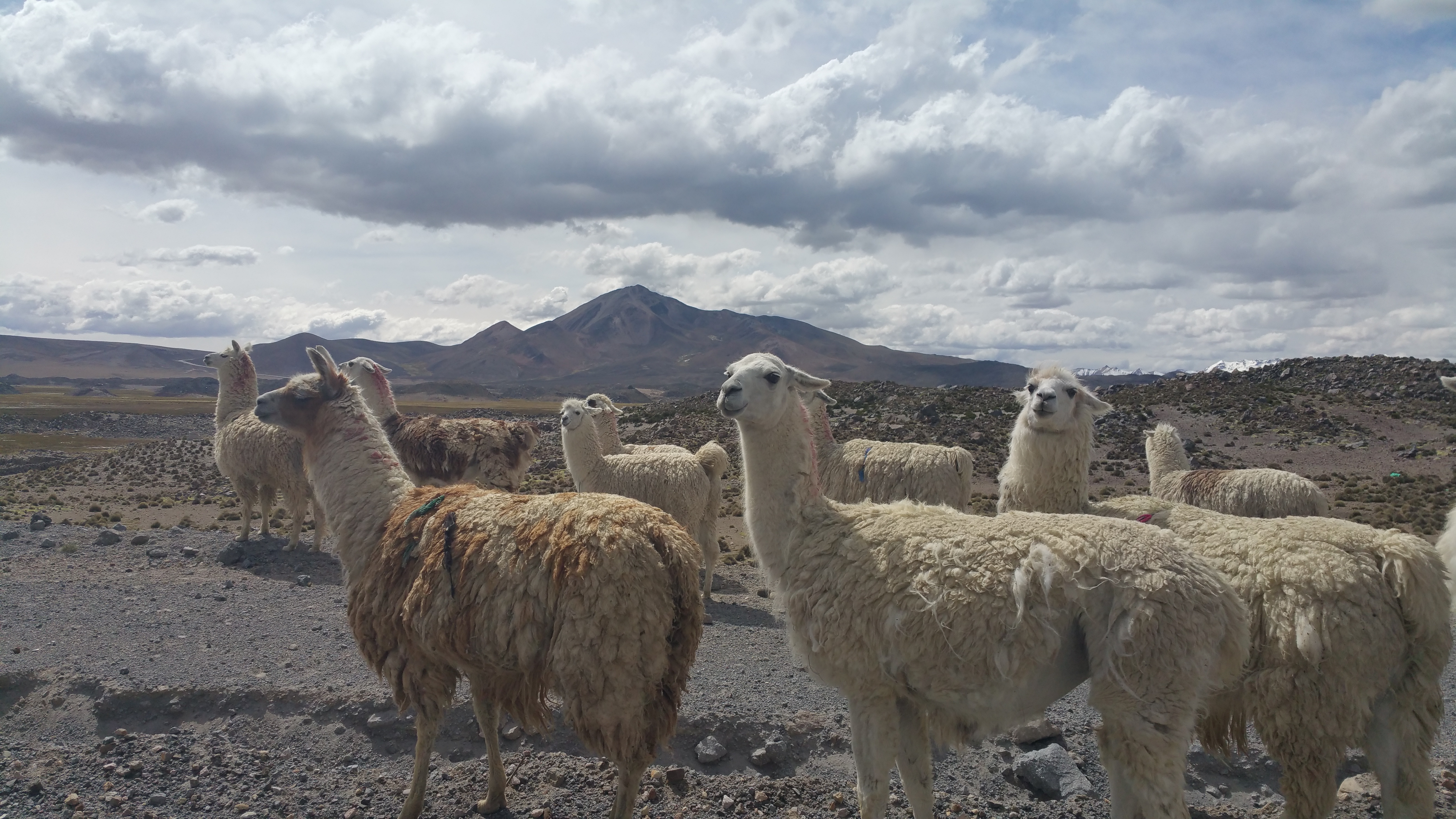Literally every other traveller I met told me they had never heard of Lauca National Park when I told them that it would be our final destination in Chile before departing for La Paz, Bolivia. In the process of figuring out the logistics of getting there and away, transport, and lodging, I soon discovered why it was not a part of the typical backpacker’s route in South America. 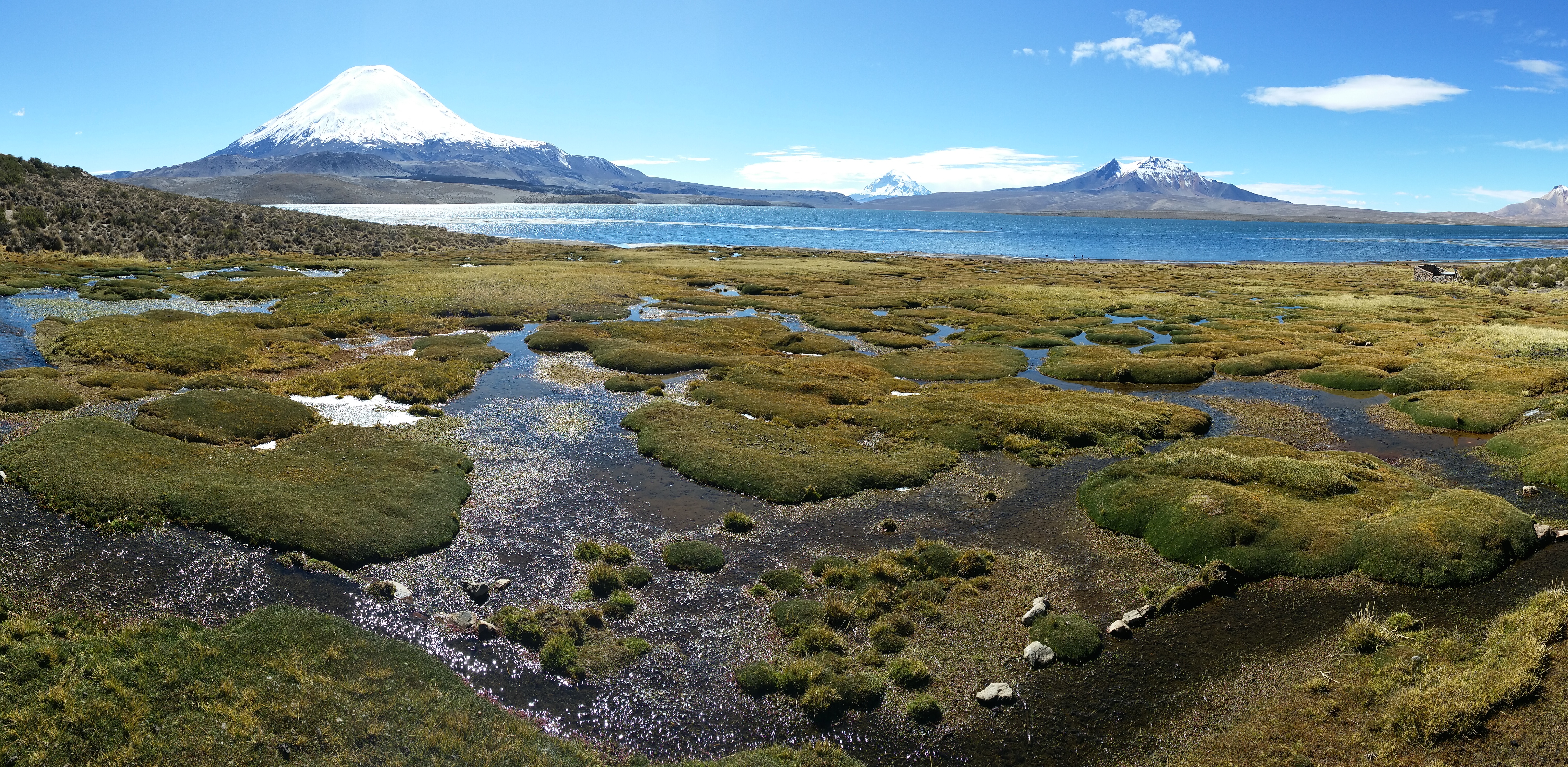
Lauca National Park is highly underrated. In my opinion, its “wow” factor is comparable to the increasingly popular Torres del Paine in the far south. I think most people don’t travel there or know about it due to the lack of information and popularity, but its beauty is so spectacular I wouldn’t be surprised if it became a destination for eco-tourists in the next generation. All I can say is that my research and planning for this excursion in the extreme north of Chile was worth it. Below I’ll lay out all the information I dug up.
They say Arica, the northernmost city of Chile only 20 km south of Peru, is the base for Lauca National Park. It’s not. Well, it is if you do the highly un-recommended day tour from Arica, where you spend most of your time in the bus and only get just enough time to snap some photos of the volcano and lake. Although a budget option, a day trip from Arica would mean going from sea level to 4,500 meters and no time for any hiking. If you’re the type of tourist who doesn’t mind being in a bus all day just to snap a few photos, go for it. But no outdoor enthusiast should go with this option.
The mid-range option (which I would have done if I wasn’t going to Bolivia) is to rent a car from Arica. You could rent a car first thing in the morning, drive all the way to the park, and then spend a night in the nearest town of Putre. Then the next morning you could return to the park one more time before heading back to Arica to return the car. I would recommend bringing a jug of gasoline because there are no gas stations in Putre (or outside of Arica for that matter). It is possible to buy gas in Putre from a siphoned can at a higher price. This is definitely the best option if you plan to return to Chile.
The expensive option is to make Putre the base for Lauca National Park and hire a tour/private driver. Food and lodging in this tiny town of ~400 people is incredibly expensive due to its location. I picked this option only because we were heading to Bolivia next; its vicinity to the border was a convenience I could not pass up. We took the night bus from San Pedro to Arica, spent a day in Arica, headed out to Putre early the next morning, spent 3 nights in Putre, and then continued our journey to La Paz, Bolivia.
There isn’t a whole lot to do in the sleepy beach city of Arica, so 1 day sufficed. We strolled up the steep hill of El Morro to take in the views of the city and engage in philosophic discussions. It was cool seeing the curve of South America from this hill—you can even see Peru in the distance!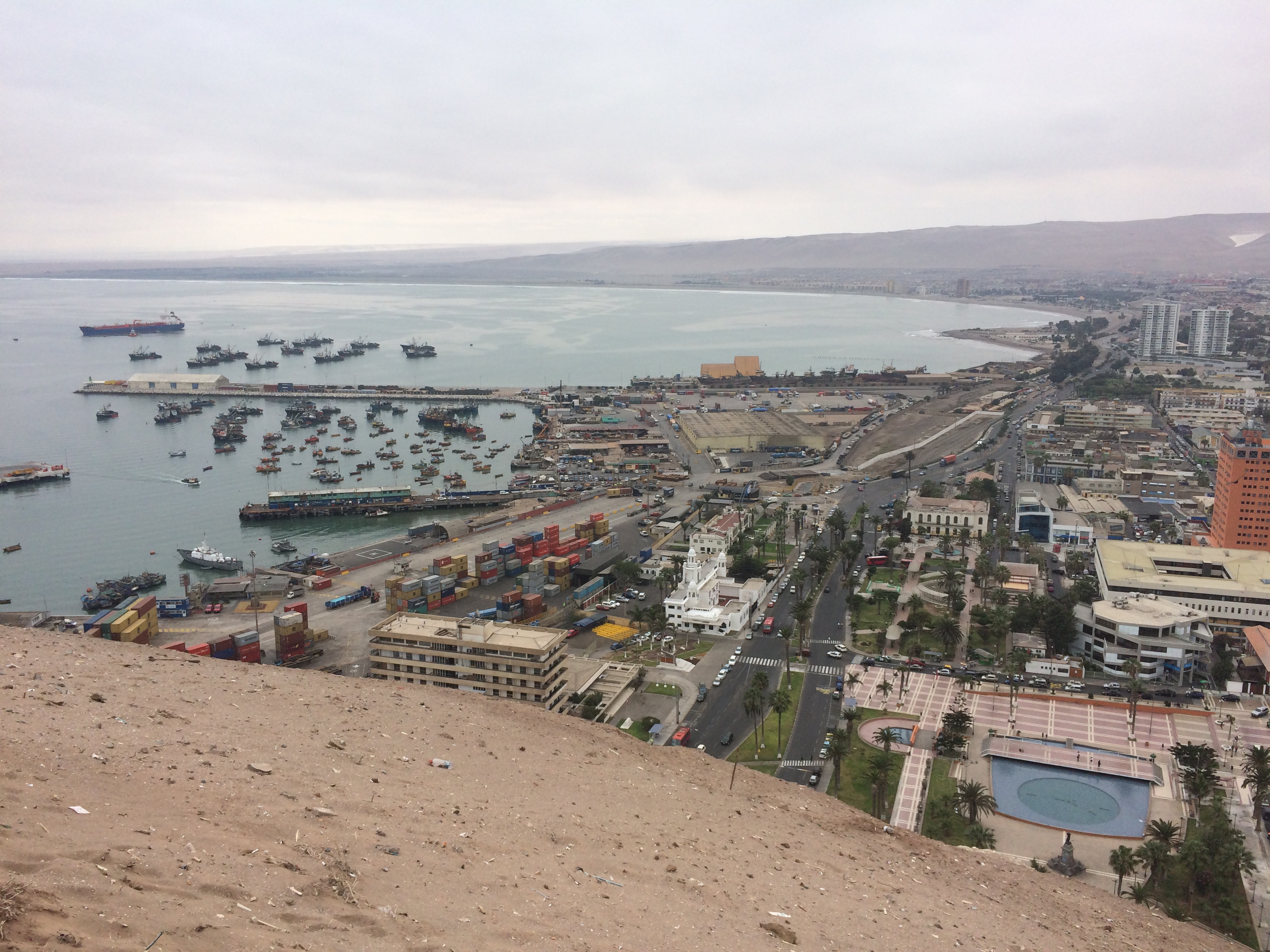

We left early the next morning at 6:30am for Putre. Our hostel keeper telephoned La Paloma (the bus company that leaves daily at 7am for Putre) the day before to book our bus tickets, and also scheduled a taxi to pick us up and take us to the terminal (not the same as the main bus terminal). The taxi cost 2,500 pesos (~$4) and the bus ticket cost 9,000 pesos pp (~$15). The windy bus ride into the mountains to Putre only took 3 hours.
Putre, the tiny little town, as seen from the highway: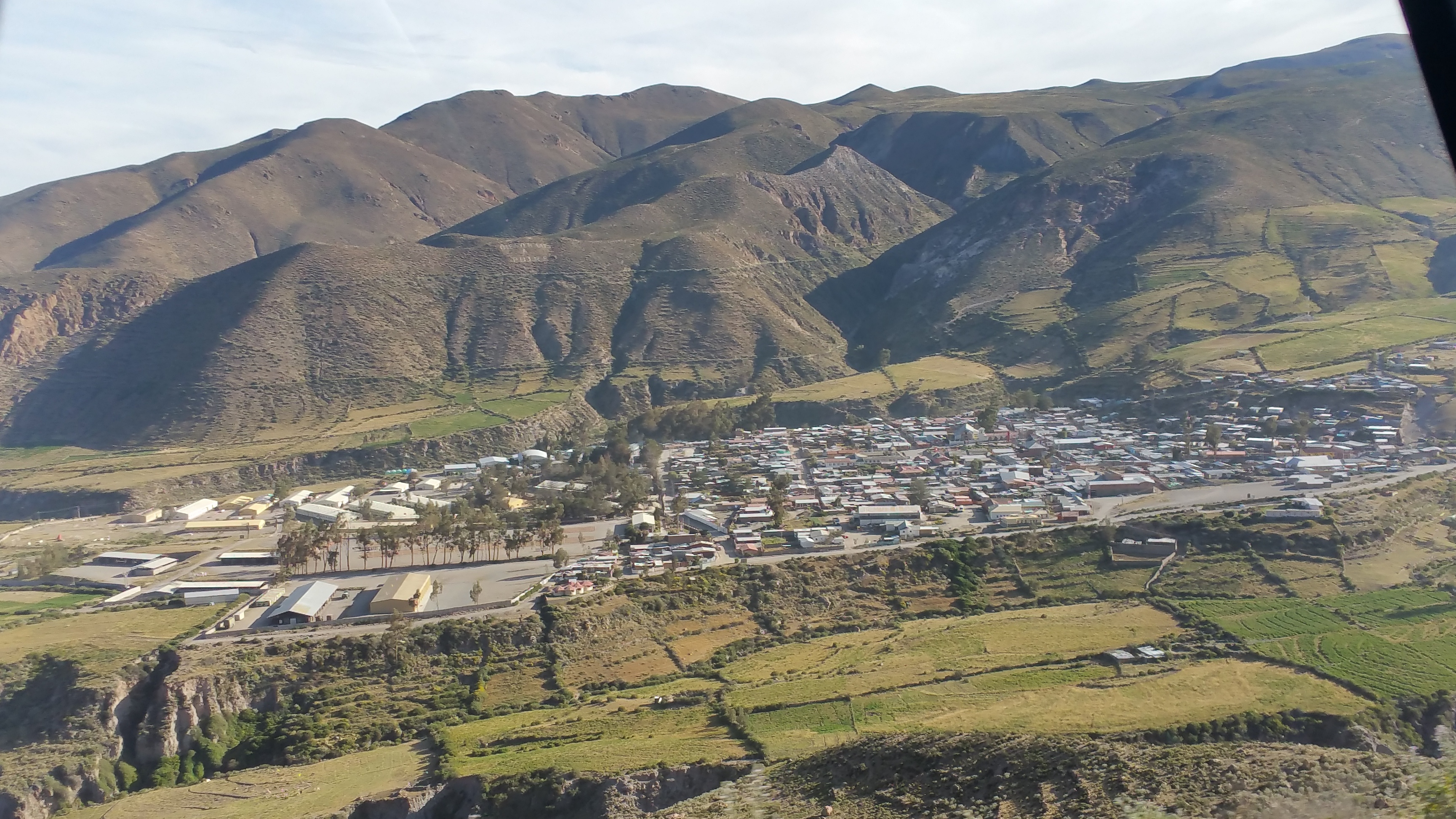
This town is tiny. And I mean TINY. There are only 3 restaurants and maybe 4 places for accommodation. Out of the places for accommodation, only 2 had heating. And out of the 2 that had heating, one had only 5 rooms. Because the temperatures ranged from subfreezing to 55ºF, we opted for lodging with heating. Had we not just done a week in San Pedro and 4 nights in Southern Bolivia in freezing temperatures without heating, I think we could have braved 3 nights in Putre. But we were over it. We wanted the comfort.
Terrace Lodge had the best reviews in town, and we definitely splurged there to be comfortable. At $80/night, it was not cheap, but it was super clean, comfortable, and warm. There are also only 5 rooms—we lucked out with availability due to the low season. An Italian couple runs the place and they told us that most tourists in Putre are European…hardly any are American, and none are Chilenos. During our stay there everyone else was German and in their 50’s. Since there were hardly any tourists in this tiny, remote town, we saw the same faces everyday—and we were definitely the only Americans.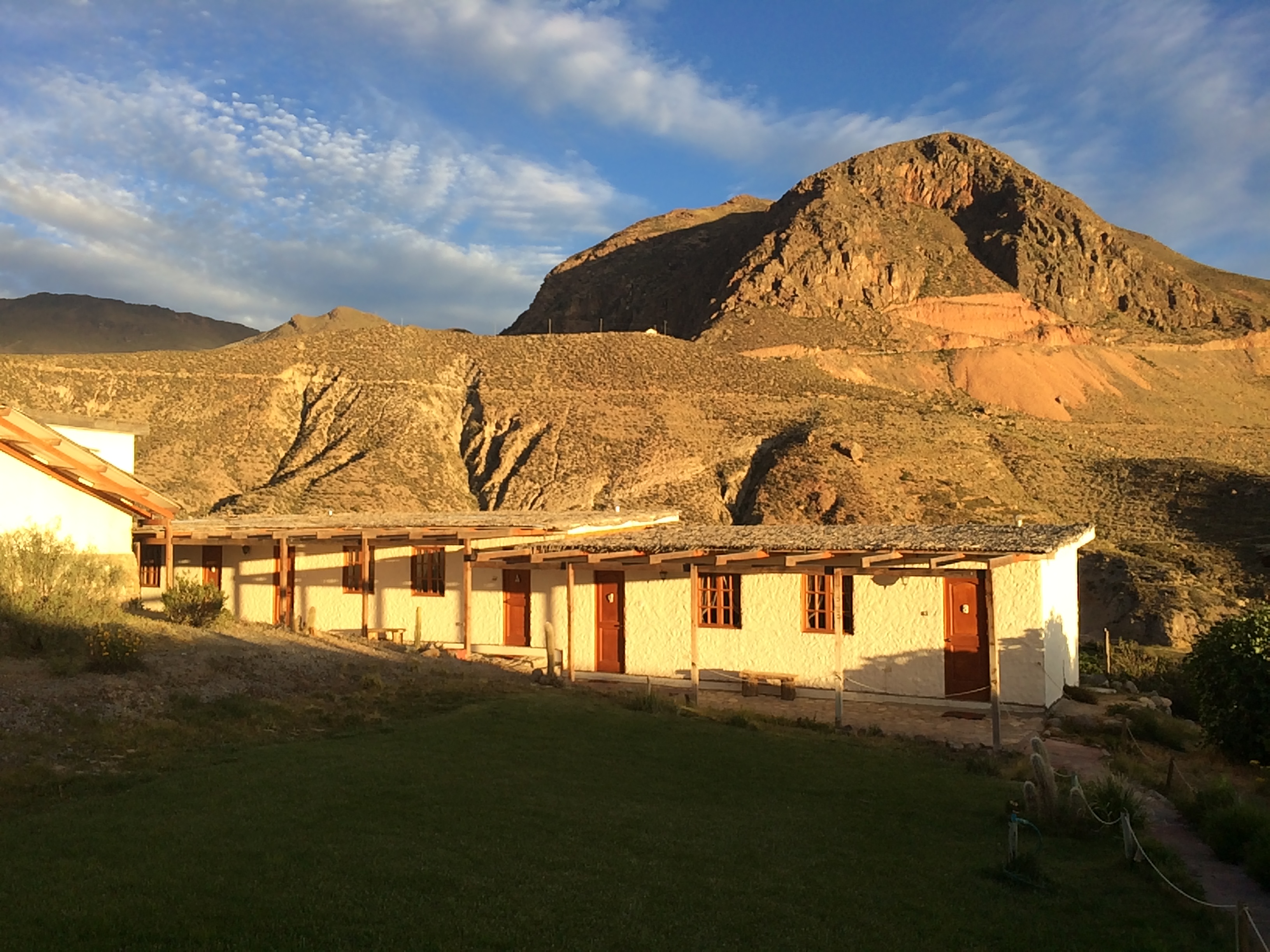
They said only one day is needed in Lauca National Park, and there were 2 other possible excursions: Suriplaza in the far north, or Salar de Surire to the south. Because I had no interest in seeing these places and because I loved Lauca National Park so much, we visited the park twice. Everyone else at our lodge had rented cars from Arica, but because we did not have a vehicle, we had to hire a private driver and 4×4 vehicle from Terrace Lodge for 75,000 pesos (~$125) per day.
Overcast skies are rare for the area, and we were just so unfortunate to have cloudy weather for our first day. When we arrived at Lago Chungara in the morning, the skies were a heavy gray and the lighting was poor for photography.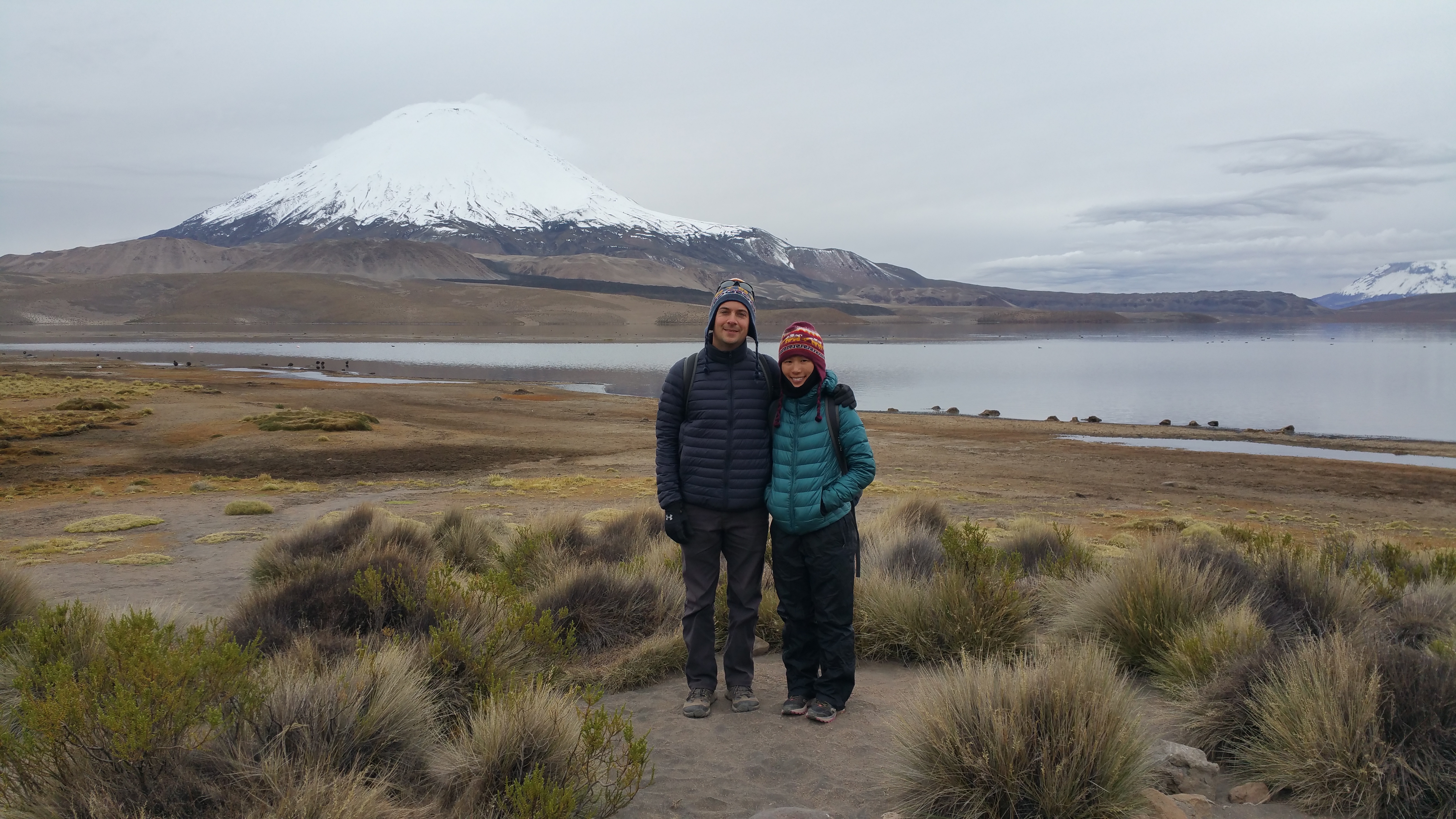

We made a brief stop at Lagunas de Cotacotani, which looked terrible under the dark skies. I knew how epic the lagoons looked in proper lighting, so I opted to return there the next day.
Then we stopped at the small village of Parinacota. Even with just a population of a couple hundred people or less, the central building was this adobe church.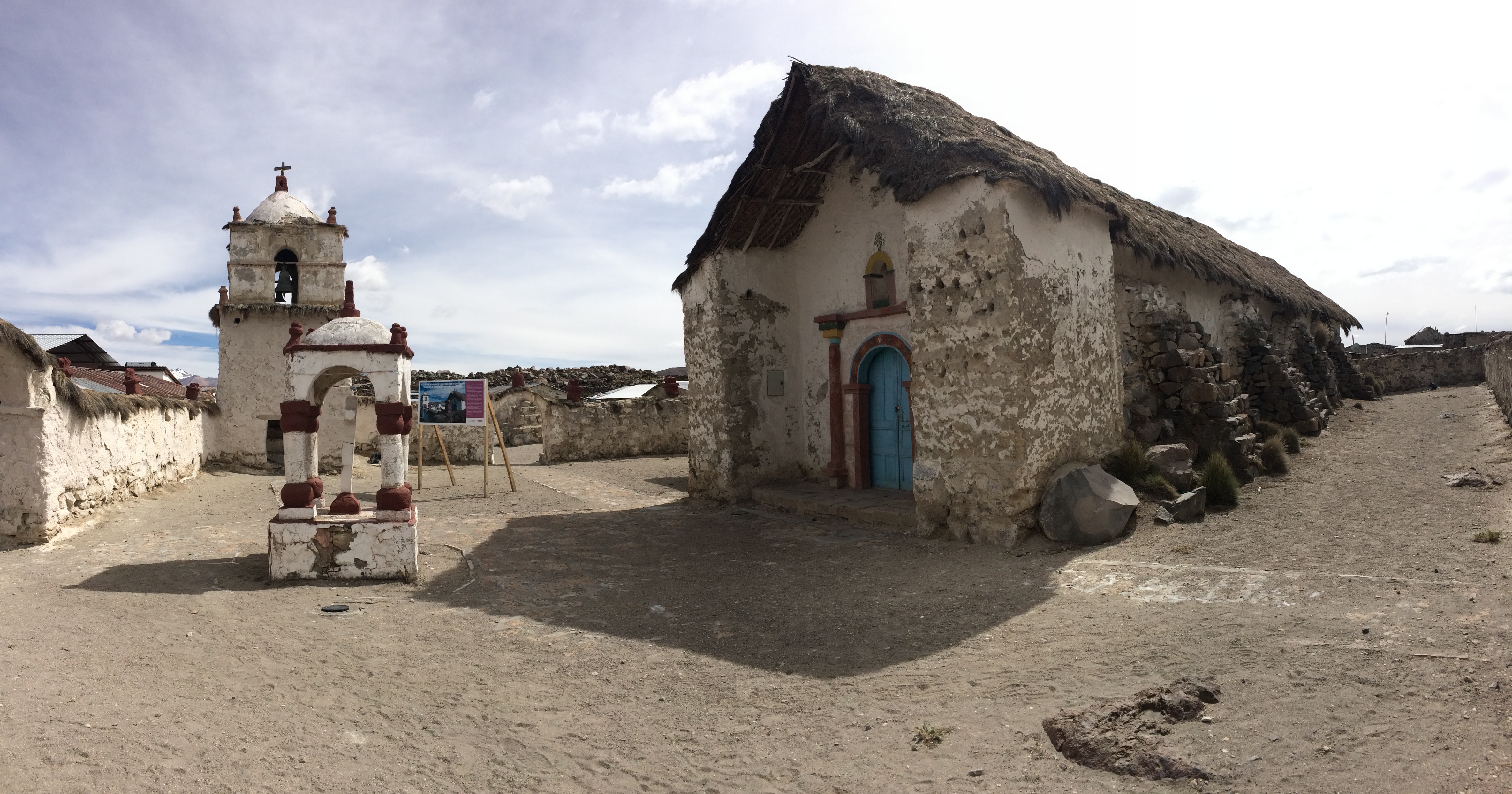
At this time, the clouds began to part, which made for jaw-dropping scenery and photos in Parinacota’s fields of grazing llama and ponds of Andean birds.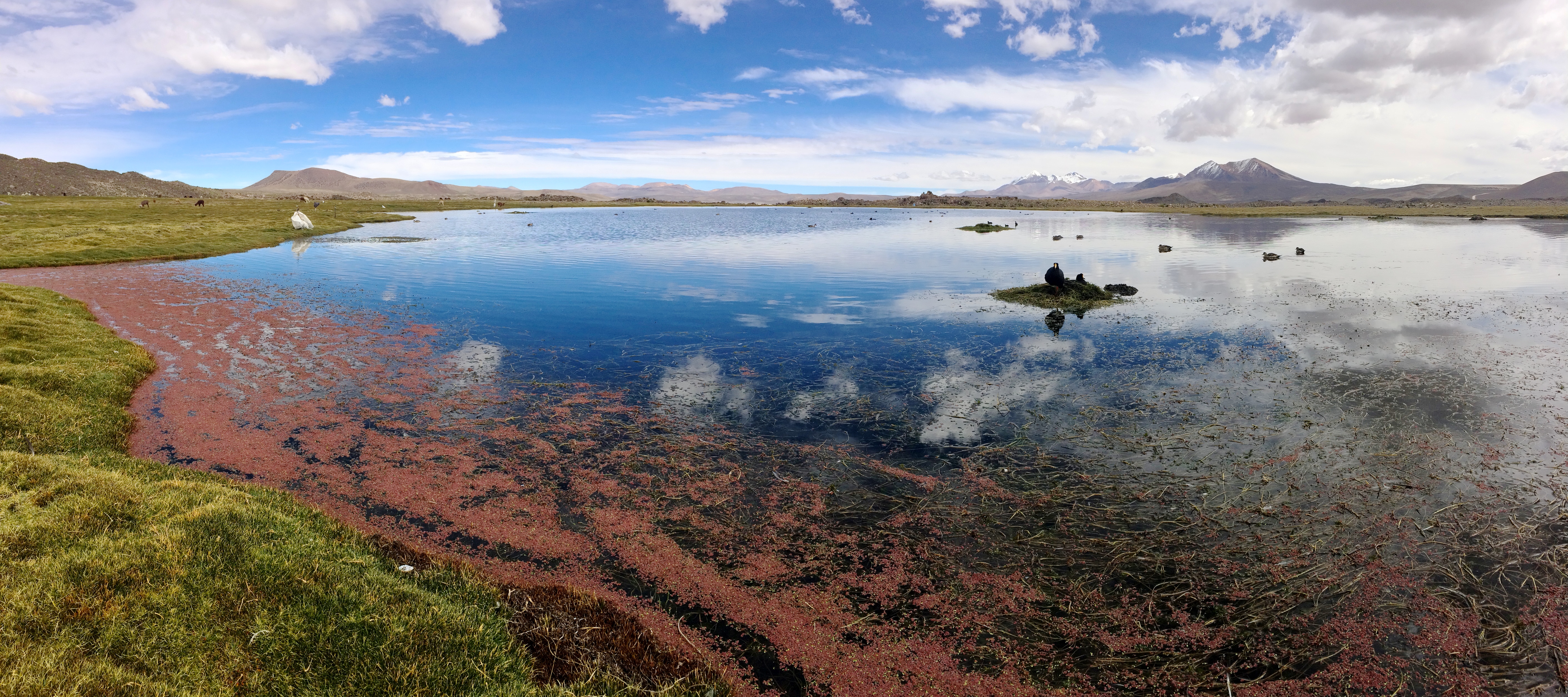
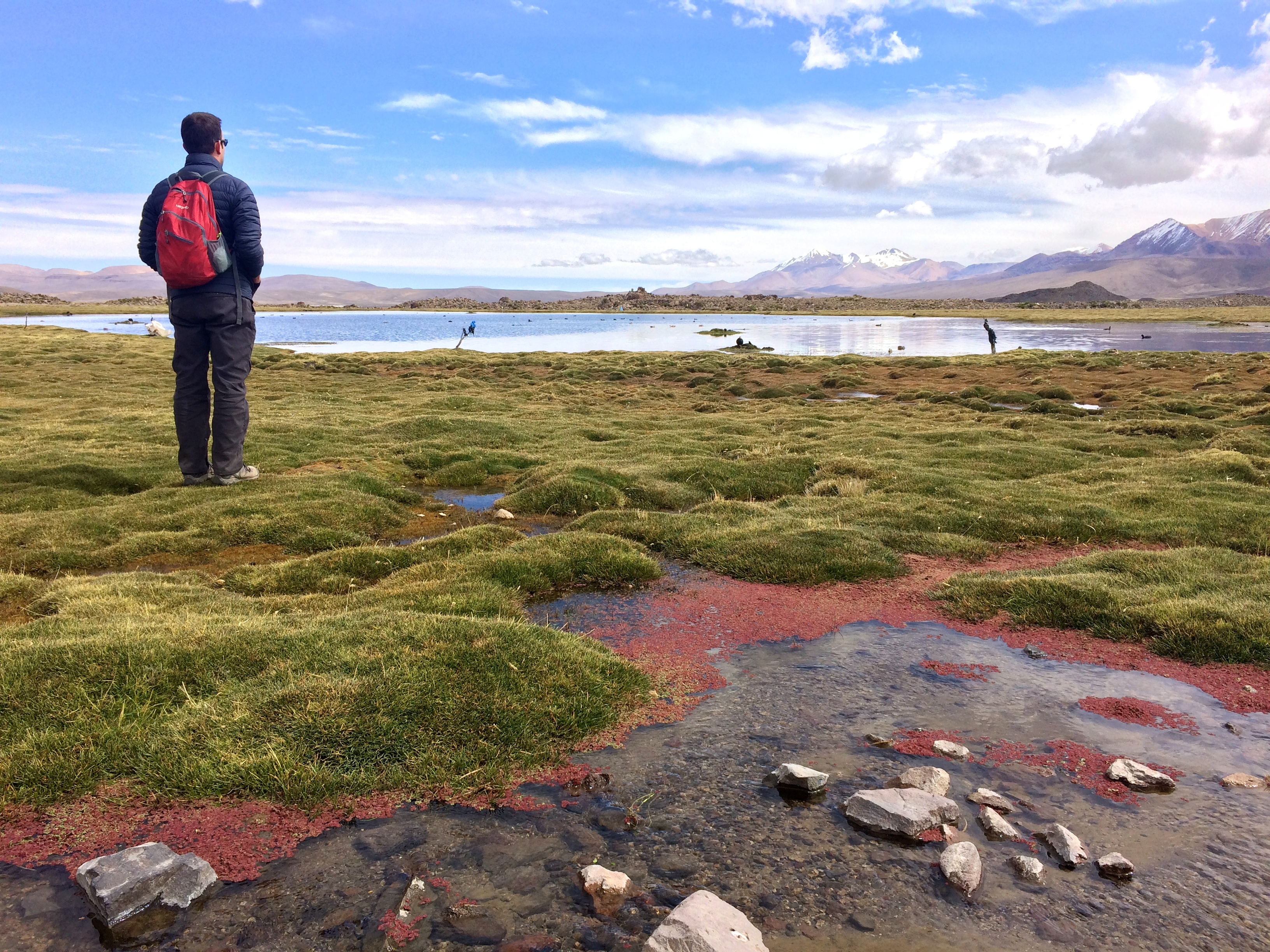
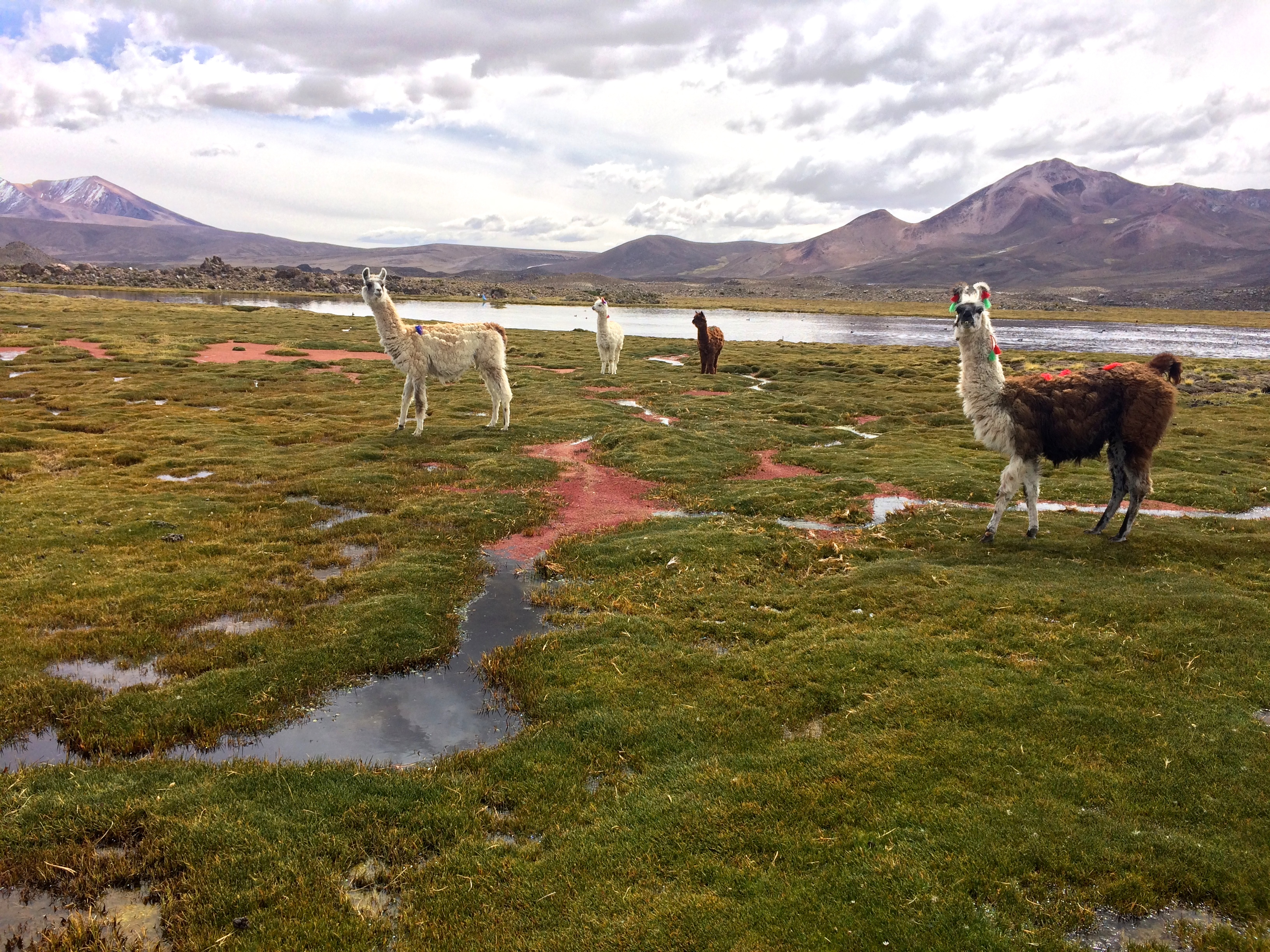
And on the way back into town, we observed vicunas from a distance. 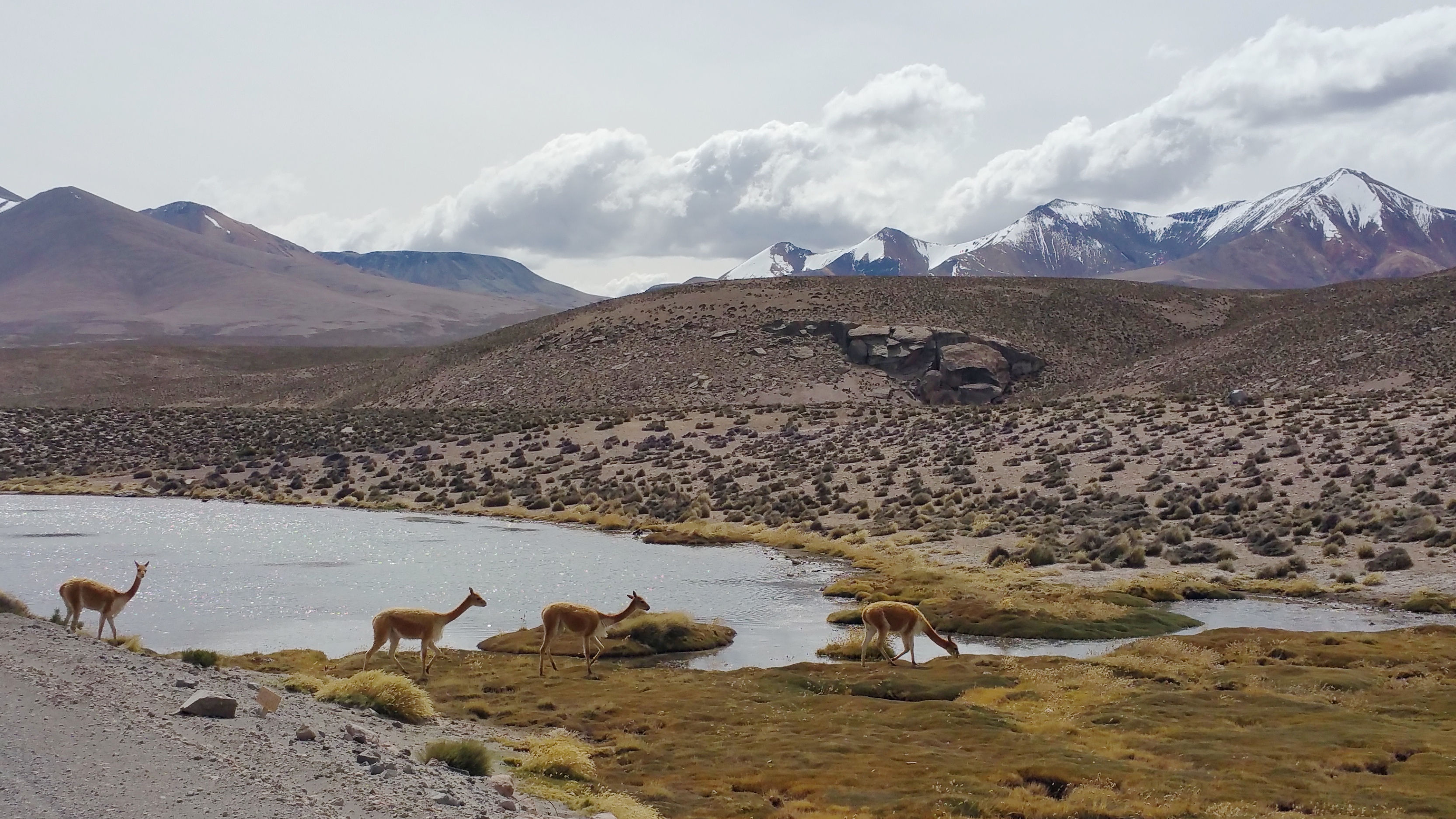
The weather improved for the following day. It wasn’t simply a plain blue sky; fluffy clouds dotted the sky for more lovely photo opportunities.
We returned to Lago Chungara. See what a difference the sunshine makes!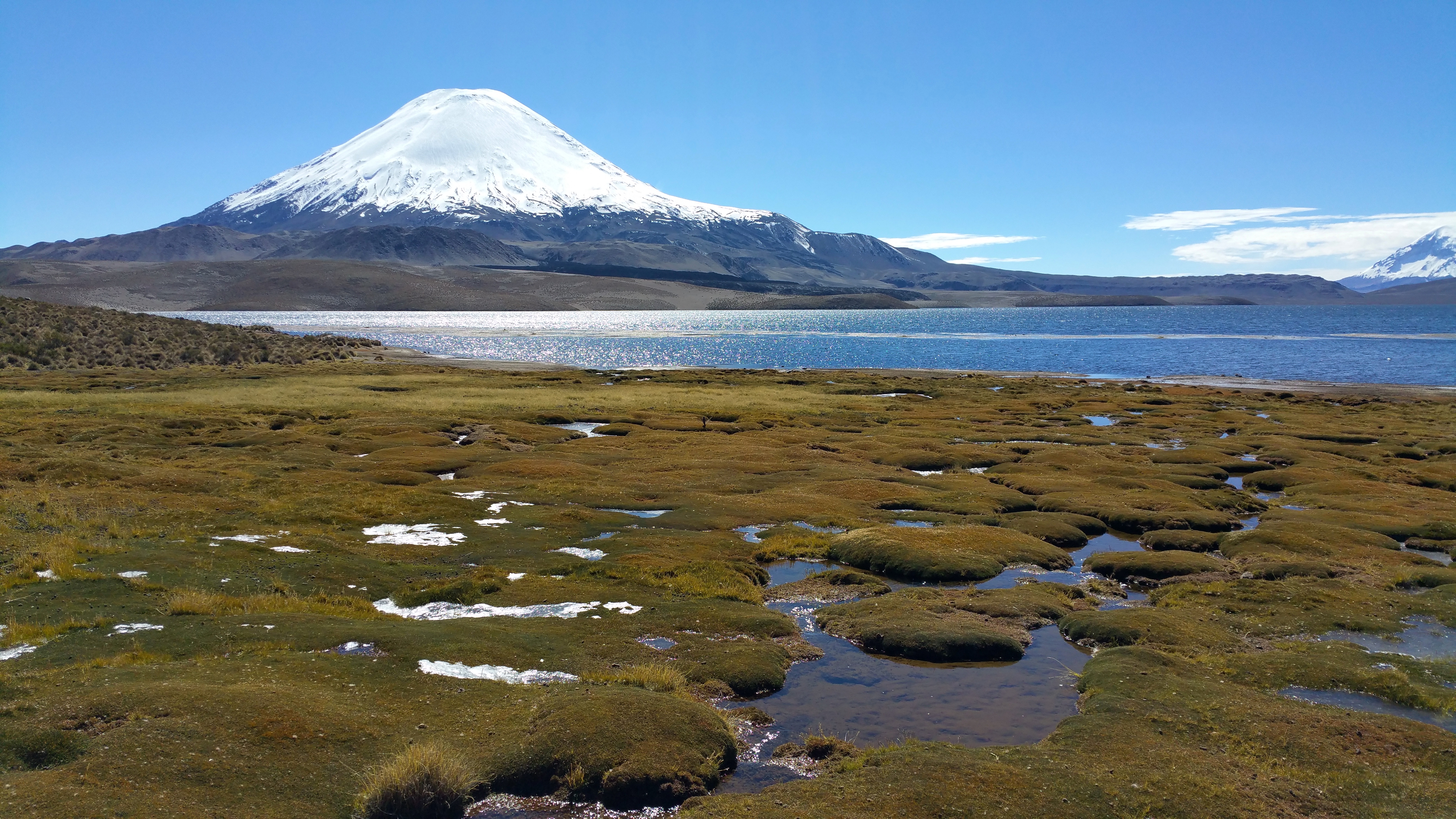
We got a kick out of herding some alpacas.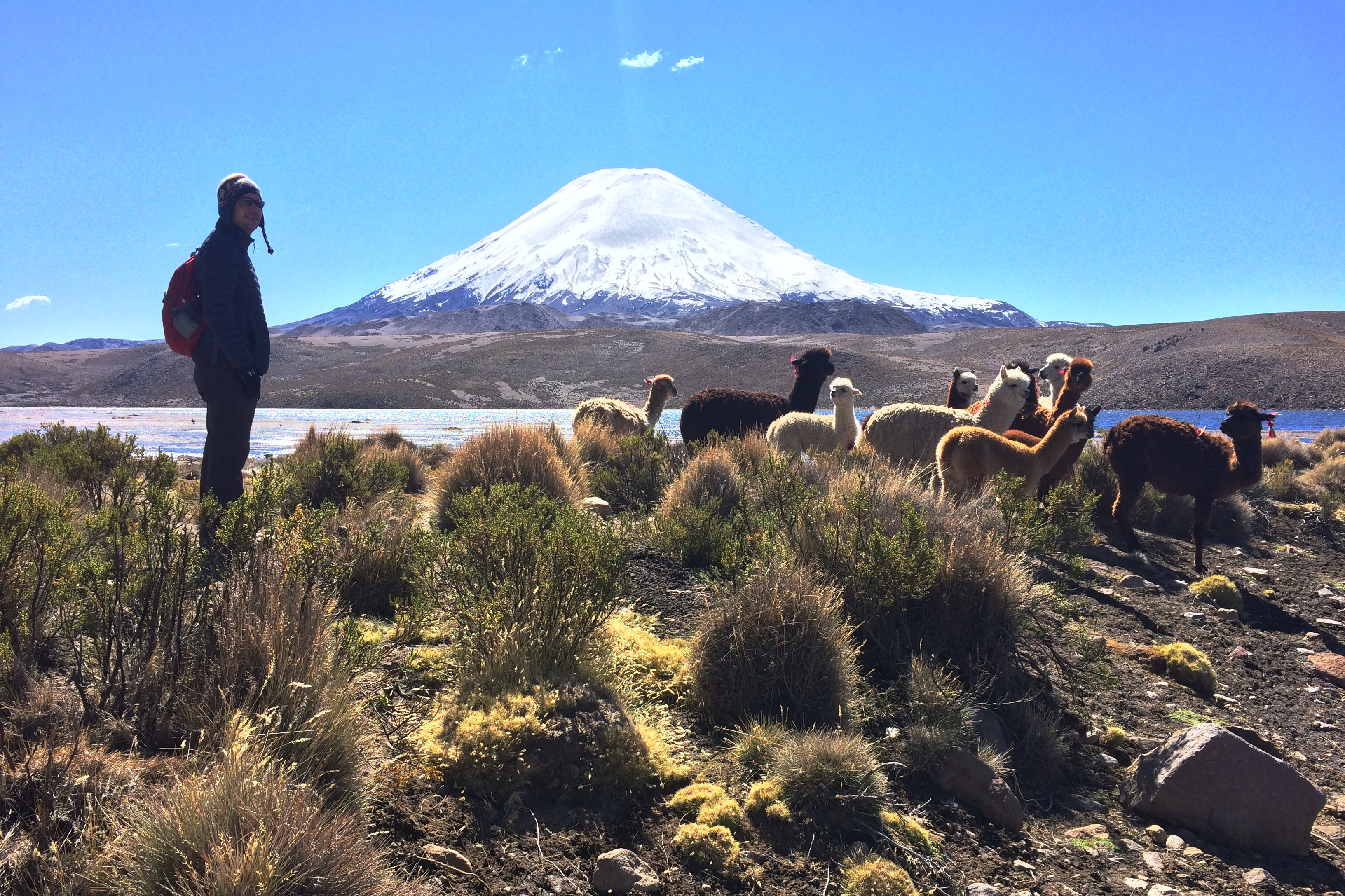
However, what we enjoyed the most at Lauca National Park wasn’t Lago Chungara. Sure, Lago Chungara is one of the highest lakes in the world and boasts a dramatic volcanic backdrop. Composing photos with llama grazing in the foreground is not difficult to do. Even the reflection of the volcano in the pristine waters of the lake makes a pretty epic photo. Despite all that, Lago Chungara wasn’t as epic as the Lagunas de Cotacotani. I’m so glad we returned when the sun shone brightly.
Apparently there is a trail from Lagunas de Cotacotani that leads hikers all the way to the village of Parinacota. However due to rain and lack of hikers, the trail had been washed out. From the highway there is a mirador, but the views are blocked by power lines and are just not close enough! We hiked down to the lagoons; I wanted to perch atop one of the numerous lava rock piles to get the best view possible.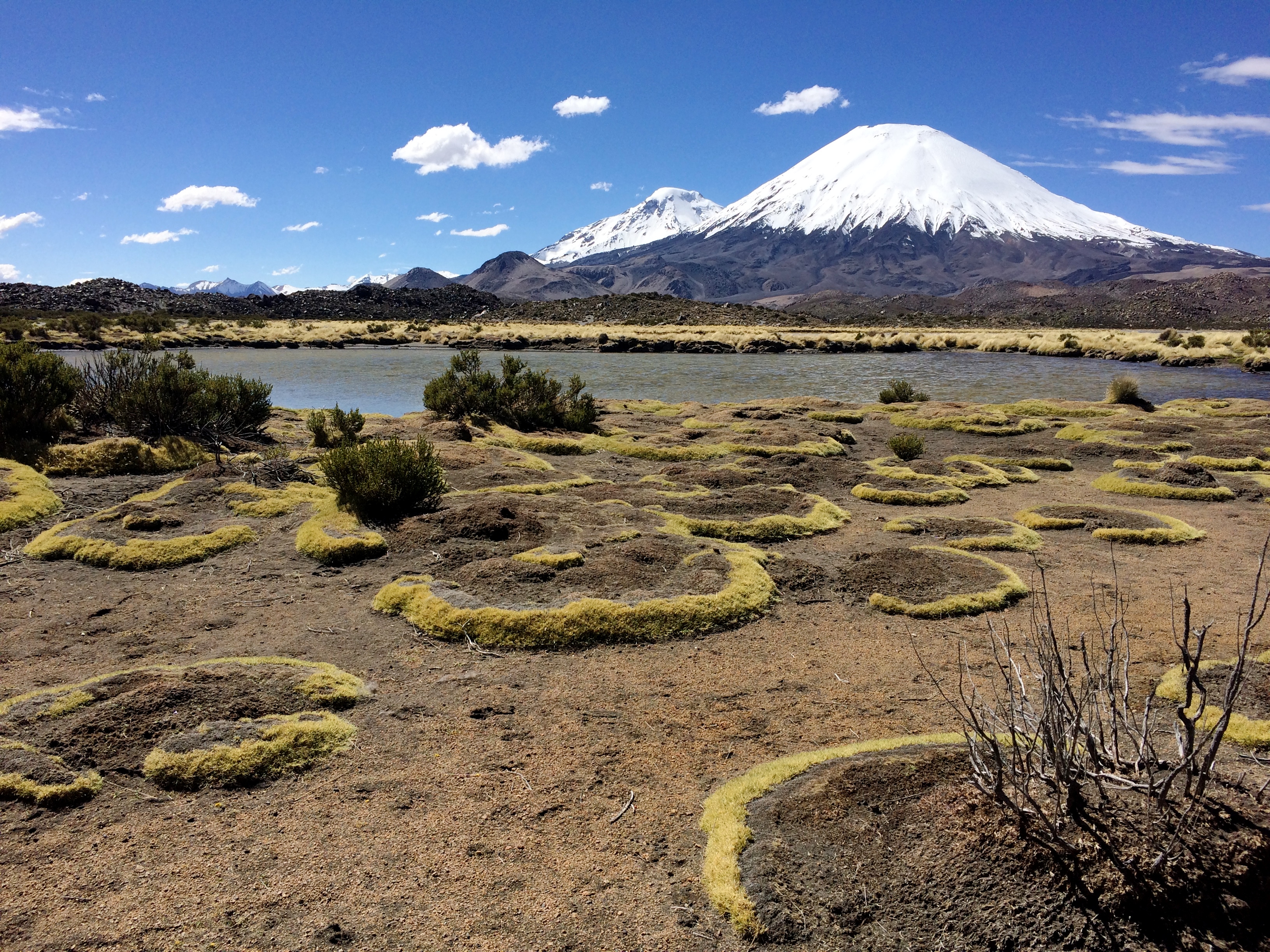
Albeit a short hike, the altitude wore me down. At 4,500 m, it was probably the highest altitude hike we’ve ever done. But strolling along a salt lagoon, climbing up and over llaretas, and hiking up mounds of lava rocks to witness scenery that people rarely see was priceless.
As we sat atop the highest lava rock pile within reach, I wondered when the last time another human stepped upon these rocks. There were no signs, no trails, no cairns, nothing to mark anything. We were able to see buses and cars stop afar at the mirador, snap some photos, and move on. Not one soul came down to get this close to the lagoons, and I savored every minute I had out there.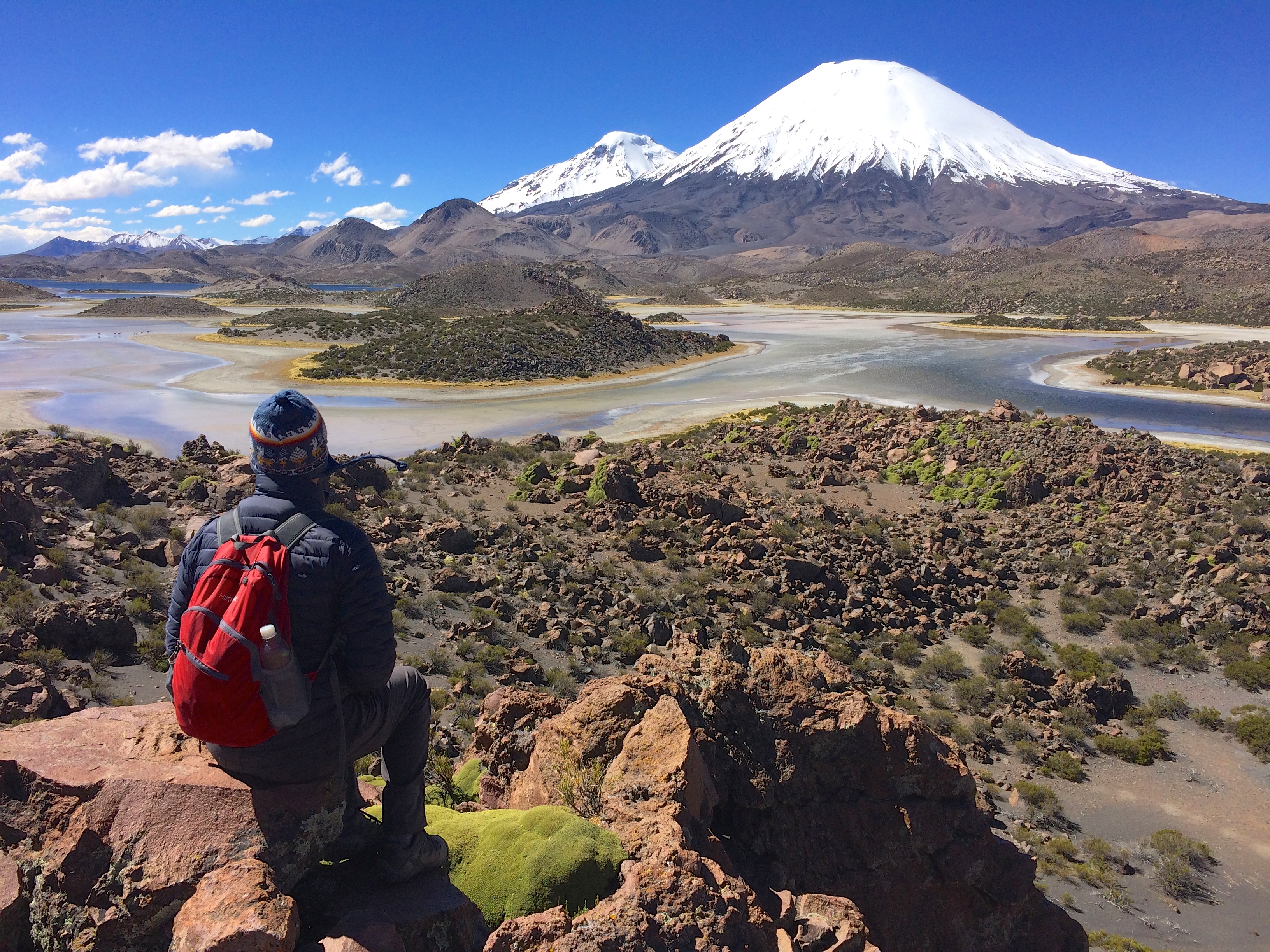

Finally we had to leave. I wouldn’t be surprised if the Lagunas de Cotacotani became a famous trail in the future, decked out with trail markers, bathrooms, and campsites. But for now…it’s still a well-kept secret.
To top things off, we had an amusing encounter with a llama on our return to Putre. On our map, there was an area marked, “Friendly Llamas.” I had no idea what that meant. When we approached the area, Chris said, “The map says there are friendly llamas around here.” I asked our driver to slow down, and then I spotted a single fuzzy llama about 5 meters away. I then asked our driver to stop so I could snap a cute photo of the llama gazing into the distance, but the unexpected happened.
The llama heard the car approach and stop, turned around, and literally ran up to the car like an excited dog. He pressed his derpy face into the glass windows, most likely expecting a treat.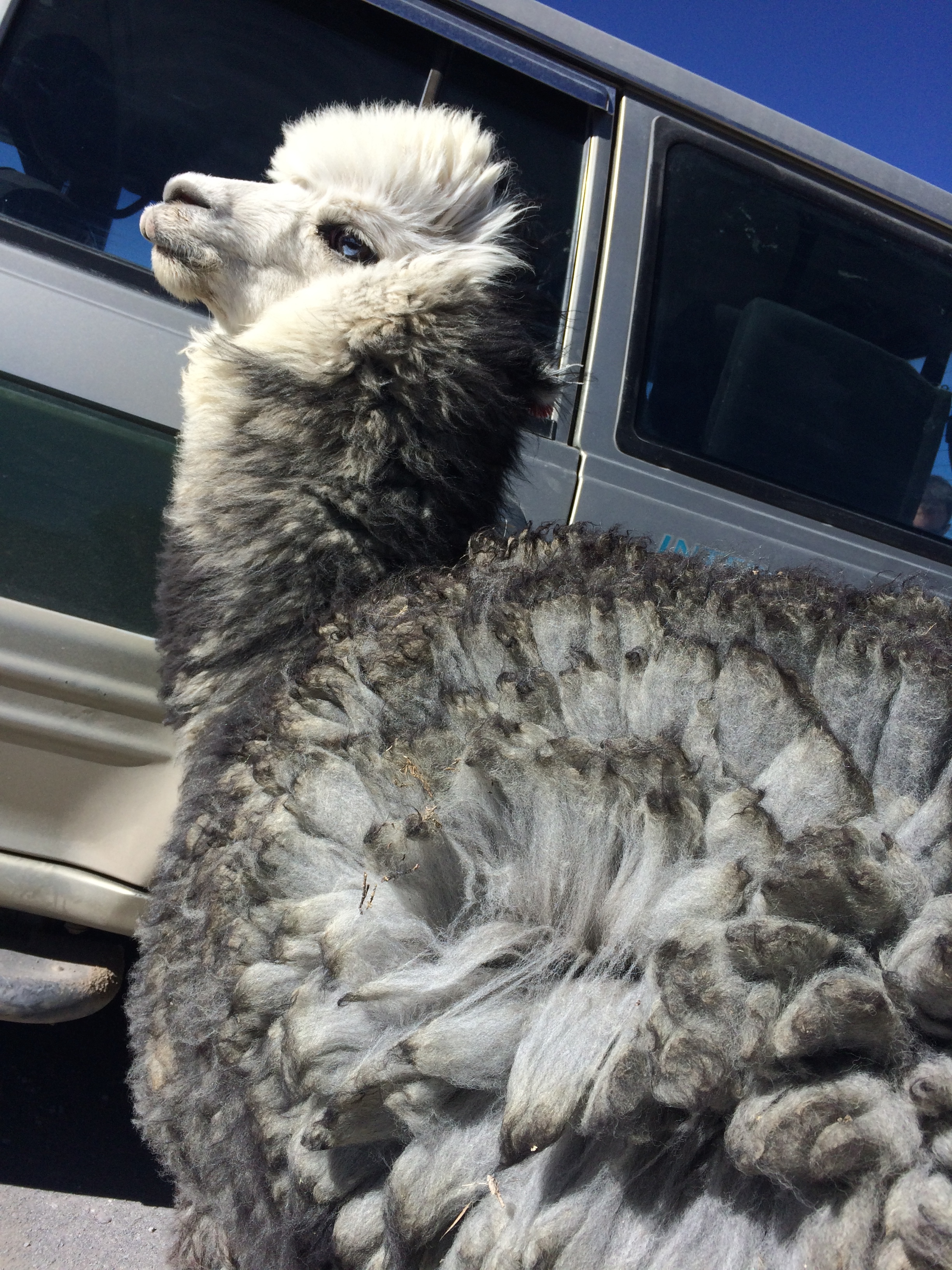
Chris and I excitedly got out of the car. “He’s a friendly llama!” Chris exclaimed, running his hand through the llama’s super fluffy wool.
We tried to feed him a banana, but he didn’t eat it. Llamas prefer vegetables.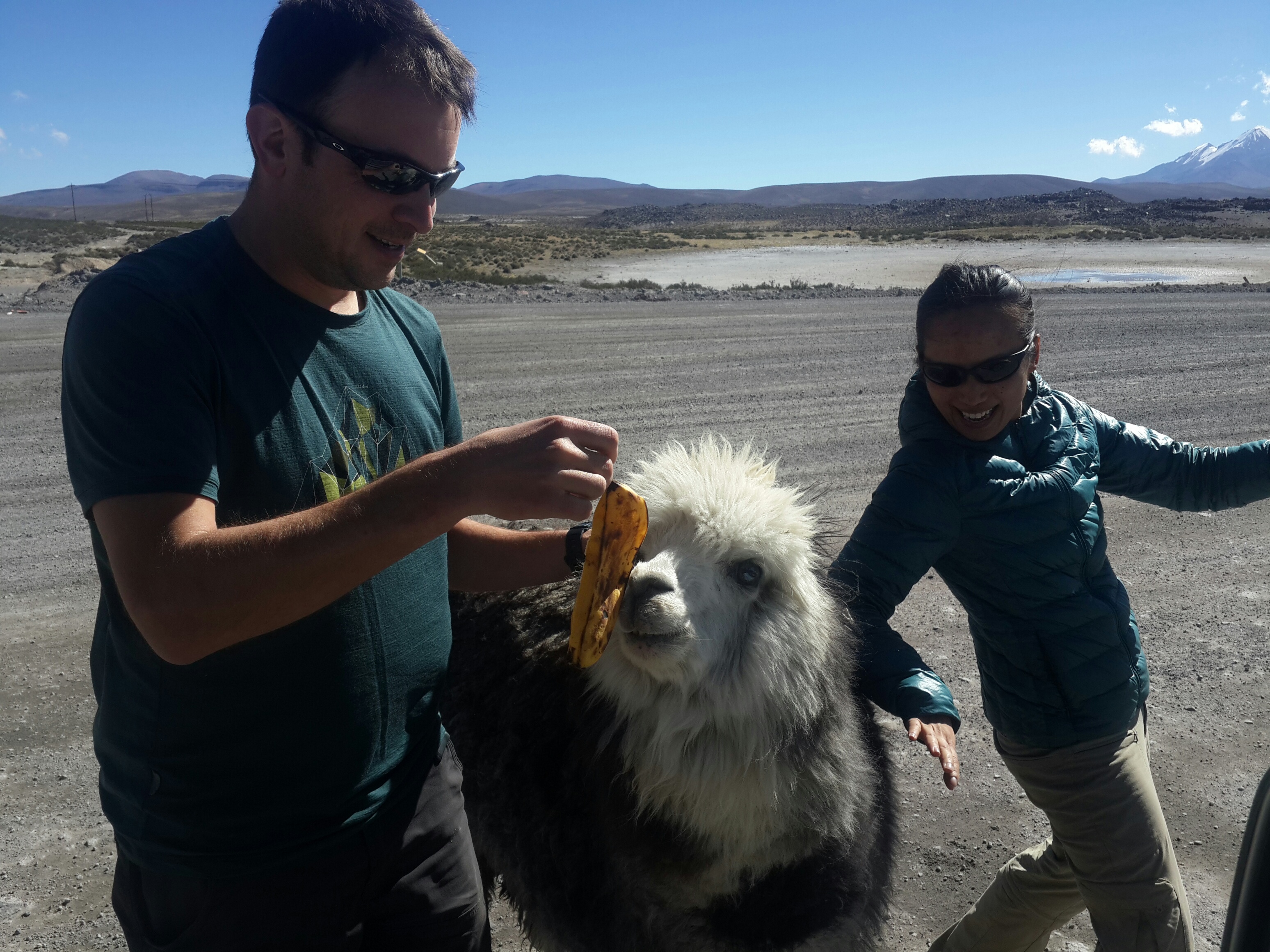
Selfie with a llama! (Right after I took this photo, the llama spit in Chris’s face. So we left.)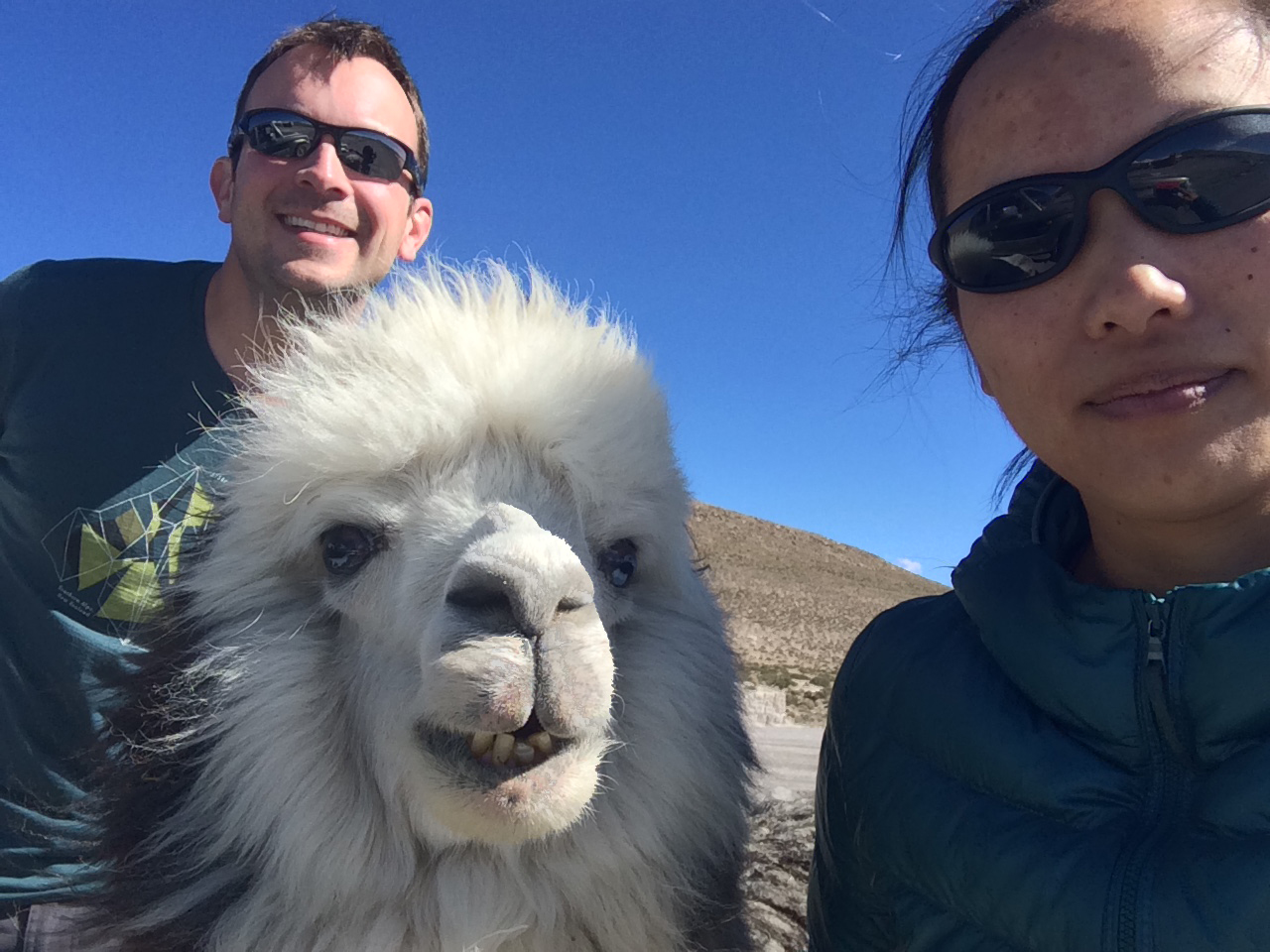
The next morning we head out for La Paz. Putre is so tiny, no one sells bus tickets and there are no bus terminals. We went to Hostal Cali a few days before and asked to purchase tickets to La Paz. They had to call the bus company from Arica to book our tickets for us. Because no buses actually stop in Putre, we had to hitch a ride 4 km out of the town to a fork in the road to get picked up by the bus from Arica. We ended up waiting at the fork in the road for almost an hour. Yay.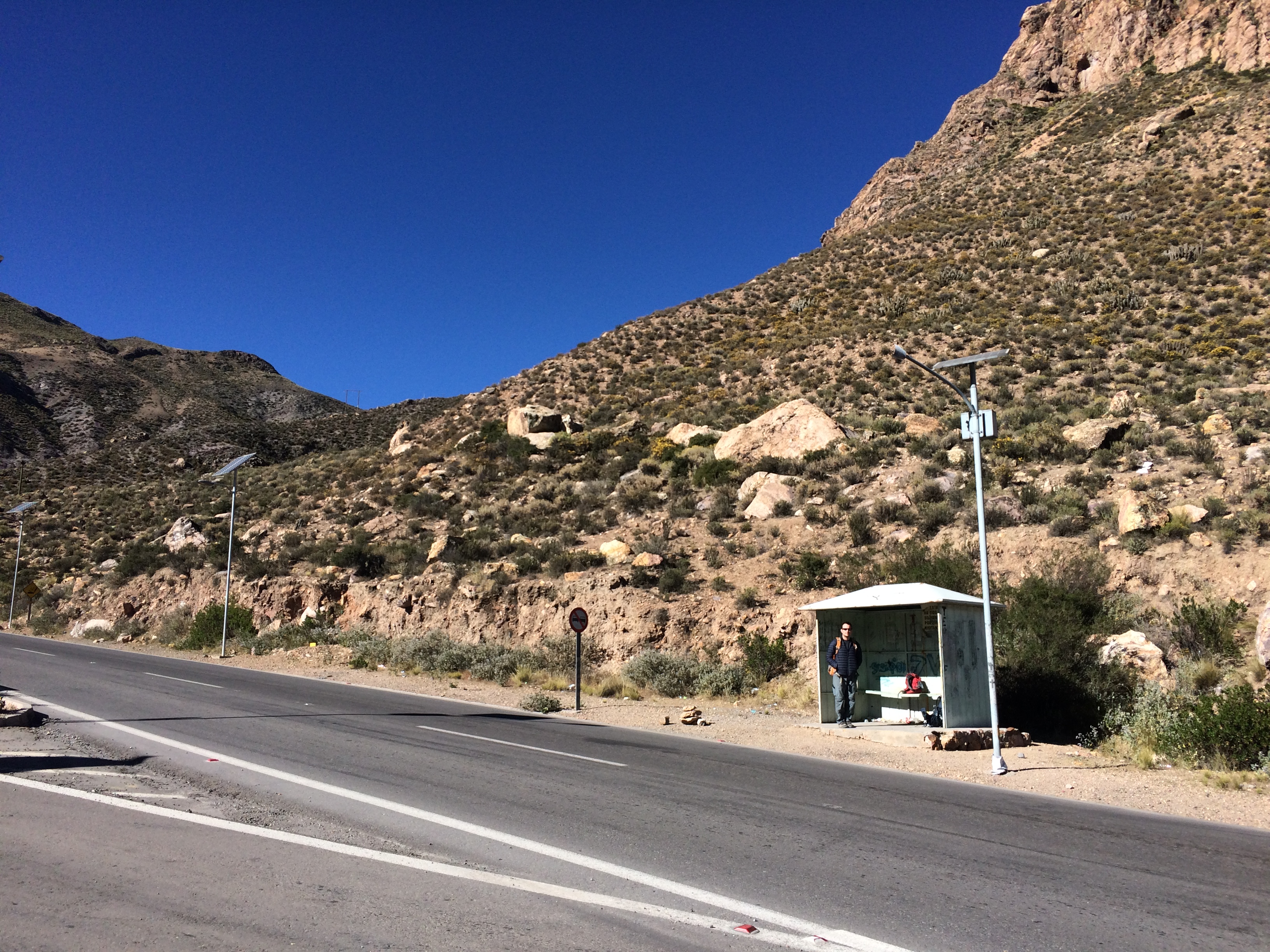
So there you have it. An incredibly beautiful national park so rarely frequented by tourists that getting up and personal with animals isn’t difficult, and trails don’t quite exist so you kind of have to figure it out on your own. Although it was an expensive side trip, a pain in the ass to get to (the highway to the park is also under construction and is super fucked up), and lacked anything convenient for tourists, I have no regrets researching the cumbersome logistics and making it happen. I’m assuming those who claimed that Lauca National Park is a disappointment compared to Salar de Uyuni did not venture out to explore and discover its hidden beauty.

